Narikala
Narikala (Georgian: ნარიყალა) is an ancient fortress overlooking Tbilisi, the capital of Georgia, and the Mtkvari River. The fortress consists of two walled sections on a steep hill between the sulfur baths and the botanical gardens of Tbilisi. On the lower court there is the recently restored St Nicholas church. Newly built in 1996–1997, it replaces the original 13th-century church that was destroyed in a fire. The new church is of "prescribed cross" type, having doors on three sides.[1] The internal part of the church is decorated with the frescos showing scenes both from the Bible and history of Georgia.[2]
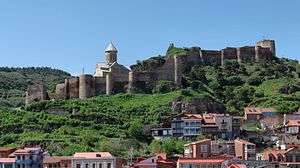
The structure was established in the 4th century as a Sasanian citadel called Shuris-tsikhe (i.e., "Invidious Fort").[3] It was considerably expanded by the Umayyads in the 7th century and by king David the Builder (1089–1125), respectively. The Mongols renamed it the "Narin Qala" (i.e., "Little Fortress"). Most of extant fortifications date from the 16th and 17th centuries. In 1827, parts of the fortress were damaged by an earthquake, and were subsequently demolished.
Gallery
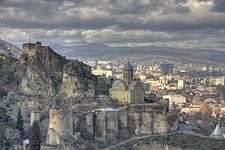
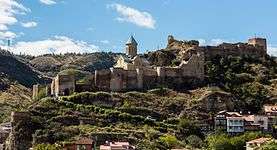 View from the center of Tbilisi.
View from the center of Tbilisi.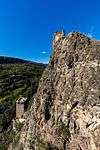 Wall at the rear part of the fortress.
Wall at the rear part of the fortress.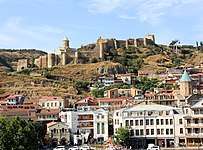
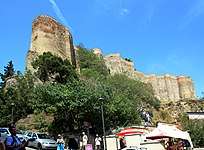
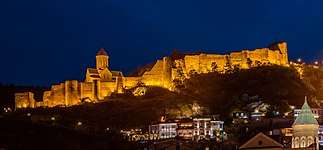 View by night.
View by night.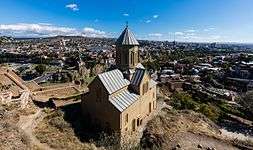 St Nicholas church.
St Nicholas church. Interior of St Nicholas church.
Interior of St Nicholas church.
References
External links
| Wikimedia Commons has media related to Narikala. |